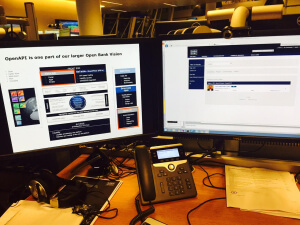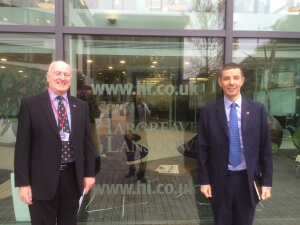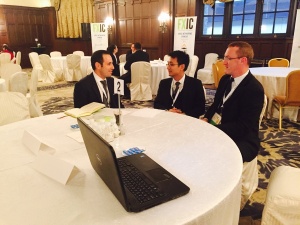Our Forex industry predictions for 2016 – A comprehensive global investigation
The FX industry is one of the most rapidly changing business sectors in the world, and 2015 has been one of those periods which will stand out in the minds of the majority of FX industry executives as a year which has required extreme levels of concentration and commitment, quick responses to industry-changing circumstances such […]

The FX industry is one of the most rapidly changing business sectors in the world, and 2015 has been one of those periods which will stand out in the minds of the majority of FX industry executives as a year which has required extreme levels of concentration and commitment, quick responses to industry-changing circumstances such as the Swiss National Bank’s removal of the 1.20 peg on the EURCHF which set the scene for the year back in January.
Here we are, almost one year on, and the landscape has changed almost beyond recognition to the point where many aspects of the business do not resemble those of twelve months ago one iota.

Having spent the last year in close contact with those at the very top level of this industry, FinanceFeeds can look ahead to 2016 with calculated aplomb and provide predictions as to what direction we will all take in the forthcoming year.
Asset class diversification – although how can CFDs be cleared?
A great deal of clamor has propagated the financial media during the second half of 2015 with respect to the will by many companies to expand away from their origins as spot FX brokerages and become multi-asset providers.
FinanceFeeds understands that this is most certainly the direction that will be taken, but its execution will absolutely not be as simple as just adding commodities and stocks to MetaTrader 4 platforms.
In order to become a true multi-asset provider, companies will have to restructure the entire means by which they acquire liquidity from prime brokerages, most of whom are not set up for this because they are reliant on aggregated liquidity for currencies from banks, and platforms which are provided and supported by third party software firms which makes it impossible to organically develop from within a specific firm.
Many companies have begun looking at providing CFDs (contracts for difference) in addition to their existing spot FX product ranges because they view this as a means of mitigating risk by not being exposed to bouts of volatility due to the CFD’s nature as a futures contract, and as a means of getting several thousand assets onto a non-proprietary platform such as MetaTrader 4.
This will, in our opinion, not be the way that the transition to multi-asset brokerage will occur.
Part of the reason for this is that there is currently no means of pricing the underlying asset which makes up the basis for CFD trading, and also there is no method of clearing CFDs
At the FXIC conference two weeks ago in Shanghai, Brian Phillips, CEO of Agrosy Capital Partners explained
“Currently, the difficulty is that most of the time there is no way for firms to aggregate CFD liqidity as there is no way to clear CFDs at the moment. I expect to see firms coming out with prime of prime solutions and ways to clear such products. As a result of the lack of credit and ability to clear such products, we are working with brokers to resolve that. When we see the CFD sector take market share away from FX, brokers across all regions will lose business overall if they are not pricing these assets today. We are very much looking forward to moving further in this direction.”
FinanceFeeds can certainly vouch that the more well-resourced companies across North America and Europe which have their own internal systems and proprietary platforms are well aware of this matter, and are indeed designing their very own end-to-end systems to accommodate true multi-asset models.

A very poignant example of this the initiative by FXCM Inc (NYSE:FXCM) to build a dedicated CFD trading environment which uses an entirely different back end to the spot FX trading system, which has been integrated into the same account using the same APIs to connect liquidity that were launched in 2010.
During a meeting with FXCM CEO Drew Niv in New York last month, the way that this will work was explained in detial.
A firm believer in the future of spot FX, Mr. Niv understands the need to build on that basis and offer a true multi-asset system to bring institutional asset class pricing and execution to the retail trader.
“Retail traders could have everything that HFTs have; the same analytics and the same tools. The only thing that will remain unchanged is the latency aspect because this is a telecommunications issue and is unrelated to the tools, and it would be prohibitively expensive for a retail trader to try to use institutional bandwidth or have a dedicated connection” – Drew Niv, CEO, FXCM.
Mr. Niv continued “There are companies such as Quadrant.io which are very clever. This hooks up 1 API and it searches 400,000 indicators which are things like statistics bureaus or the UN.”
“Using analytics like that, traders could take that information and if for example they found that Khazakstan’s economic report has a brearing on oil price, they could do that research. CNN probably spent millions to put that together, whereas some guy today put that up for a million.”
“Systems like this only charge a few dollars a month, and anyone can do this now because it is so cheap and accessible. I believe the one bottleneck is to monitize that innovation. If you’ve got millions you can go and get your own HFT. It’s the financial access that costs a lot.”
“In the CFD sector, the data revolution is already here, so we can seamlessly join it without having to put much resources into it. There is more fintech stuff to come but this would be just the final step because the data is already here within CFDs, whereas in FX the industry is behind the ball” concluded Mr. Niv.

With systems like the SaxoTraderGO being available from SaxoBank, which facilitates true multi-asset trading on one device-neutral platform using one central system, the potential for developers and other financial institutions to provide a real multi-asset environment to their clients by developing their own systems around SaxoBank’s OpenAPI solution is a very important development.
The OpenAPI solution places SaxoBank as a facilitator and gives its commercial customers the stability of its entire topography as a basis for building bespoke trading applications for end users. Systems such as this will be of great popularity in the forthcoming year and will stand out above those constrained by off-the-shelf platforms and aggregators which leave companies constrained by the limitations of a third party solution as well as causing the same obsolescence to apply to all firms in that sector.
….and talking of value propositions
The entire retail FX industry has been concerned about value proposition for most of 2015, as many firms which are either a white label of one provider, or use third party solutions to conduct their direct business and operate their ‘partners and IBs’ channels are finding it increasingly difficult to differentiate themselves from one another.
Three or four years ago, this would perhaps not have mattered, and the similarities in product offering could be disguised by the different marketing approaches and regional distribution.
This no longer applies, and will become even more of a consideration in 2016. It is no longer possible to take a white label of an existing brokerage, pay the $5,000 MetaTrader 4 integration fee, have a website integrated and then go into a digital marketing campaign to attract, for example, Chinese retail customers by giving IBs a good commission and offering low spreads.

Everyone offers low spreads now, and from FinanceFeeds’ extensive research across China, we can most certainly deduce that almost all of the major introducing brokers (IBs) in the important development towns such as Shenzhen, Zhengzhou and Guangzhou, as well as the large, plate glass firms in Shanghai do not have any interest in haggling over commissions or checking which of the 5,000 MetaTrader 4 brokers have slightly less spread than each other.
Most IBs in China nowadays resemble actual large brokerages, with trading desks, portfolio management services, and are very much involved in handling many asset classes for customers ranging from managed FX portfolios to property investments. They are, and will continue to be more interested in as 2016 progresses, the provenance of a company that they send business to, which equates to three aspects:
- Public listing on the New York or London Stock Exchange
- 15 years or more in establishment
- Continual visits to the offices of IBs by senior executives of the companies to maintain good business contact and to formulate besoke working practices between brokers and IBs.
Bye bye bank transfers
This year will be the year during which all retail FX firms wishing to do business with IBs in China will have to integrate UnionPay into their systems.
Until now, brokers have relied on the somewhat hit-and-miss method of attempting to receive bank transfers from IBs and retail customers (whether omnibus or direct) and have used some very specific algorithmic payment channels to facilitate this as it is not easy to receive funds from China due to capital control laws.

The Chinese government is putting a stop to the practice of bank transfers and has got enough high-quality internet firewall technology at government level to beat the algo payments. The Chinese government’s internet firewall and security department employs over 2.5 million officials and is the most sophisticated internet security system in the world.
Within the retail FX industry, between 40% and 80% (depending on region and company) of business now comes from China, and the only way to continue to do this is to integrate the Chinese government-owned UnionPay solution into the payment channel of brokerages.
This is not easy, as there is a significant approval process, and China reserves the right to deny certain firms from integrating and using UnionPay.
The best thing to do is to apply now and do it quickly, before China becomes too concerned about too many UnionPay-equipped brokers taking money out of China and begins to stem it. This is how China works. The government doesn’t mind a bit of international business, as long as the government has control of it (hence the move to UnionPay rather than bank transfers) but the government will decide when enough is enough and when it has enough channels for international IB business.
Domain names will become more specific and the TLD codes will be unique
Value proposition does not just apply to marketing and product range, or trading platform. These days, the online space is so crowded, and Google has stuck firmly to its principle of sending crawlers to similarly designed and worded websites to check for duplicate content or too many ‘also-ran’ sites offering similar wording and sentences.
This is down to Google’s ‘user-focused’ ideology of not wanting to have the first pages of any search clogged up with the same content, therefore any firms doing this on a regular basis or emulating each other (a common practice for white label providers which simply put different logos on the same website) will be penalized without warning and their site will disappear from the first search page. Google recognizes certain long-established sites and allows approximately 3 sites with similar content on one specific subject but will punish newcomers with copy content.
This stands owners of their own websites in good stead but it will take more than that to stand out. Last year, IG Group bought a series of unique top-level domain (TLD) codes with industry specific words after the dot, so instead of dot com, they would read dot forex, or dot trading, for example.
Whilst this has not yet gained much traction, it will be one way for firms to make the most of the search facilities and as a direct result, optimize their position on the web.
Japanese electronic trading giant GMO Click paid $6.8 million at the end of last year when it purchased z.com, one of only three single-letter domain names on the entire web, from compatriot Nissan Motor Company. Did GMO know something about web searches that made them do this?
Prime Brokerages – the emulation of exchanges?
Prime brokerages have been faced with challenges during 2015, and not just because their broker partners passed on their order flow which caused the prime brokerage to be exposed to negative client balances in January as a result of the Swiss National Bank’s removal of its 1.20 peg on the EURUSD.
Counterparty risk is one issue, but evolution to be able to cope with the demands of competition in other areas is paramount and should form a feature of 2016.
During the course of 2015, FinanceFeeds has been engaged in many a debate with senior executives in the prime brokerage and exchange sectors, and as a result of these discussions can deduce that the prime brokerage sector has changes in store.

Many FX executives would, understandably, doubt that prime brokerages would establish relationships with exchanges or whether the authorities would make them process all orders through an exchange, largely due to the vast membership and clearing fees that big technology providers and venues such as CME, ICE, NASDAQ OMX or LME would impose, because their businesses are geared toward catering for the order flow of large institutions rather than retail brokerages.
Our view is that there will be a gradual move toward exchanges, but it will not be a case of paying vast fees to Chicago’s vast exchanges and then hoping that retail firms can factor this in (which they would never be able to).
Instead, it is entirely possible that virtual exchanges, perhaps owned and operated by the large firms of Chicago, would be established purely for FX and retail multi-asset orders to be processed, with little or no membership fees that can be joined by prime brokerages.
We consider that these ‘exchanges’ would have no physical presence and could be cloud hosted and deployed to any location, therefore being near the prime brokerages’ point of execution to reduce any latency, yet the same effect of a real exchange could be achieved by placing the broker and trader on the same level and pricing being readily available for inspection as publicly available information if it is handled by the large exchange companies.
In this respect, the binary options sector is ahead of the FX industry because Cantor Exchange’s binary options venue in the US is a real exchange that has no membership fees and places traders and market makers on the same level, and otcXchange is a new virtual exchange which we know is being developed for integration with certain prime brokerages in America.
Contrary to common dialog in Europe and the Middle East, the FX industry in America is going from strength to strength. FXCM and GAIN Capital will continue to enhance their product offerings and provide multi-asset trading – FXCM is pipping GAIN to the post at the moment with its new integrated CFD solution, whereas GAIN Capital has thus far relied on its (very expensive) purchase of City Index in order to take traditional CFDs global.
Our opinion is that it will take more than taking traditional CFD products to a global audience, for reasons previously mentioned in that these are impossible to clear and the pricing considerations are a massive hurdle.
Scottrade, Charles Schwab and E*TRADE are dominant across America and offer CFD trading in stocks and equities. This is a very established market and will remain very US-centric.
On the other side of the pond, Bristol-based Hargreaves Lansdown remains the largest financial firm in Britain, and its Vantage system which allows the management of all asset classes via one platform, including CFD products that are based on ISAs and SIPPS, both intrinsically British investment classes, is beginning to catch the attention of senior executives in what had been until recently a London-centric FX business.

Hargreaves Lansdown is a £6.9 billion firm which develops its own proprietary systems and yet is never concentrated on by those who report on our industry. This will change. FinanceFeeds CEO Andrew Saks-McLeod remembers when Hargreaves Lansdown was a small independent financial adviser which operated from a very small office in Clifton, Bristol yet the firm’s business model has evolved so much that it is now attracting top talent from London’s finest, such as the appointment of former IG Group CFO Christopher Hill this year.
If the UK’s spread betting and CFD firms really are serious about their multi-asset aspirations, they place themselves firmly in competition with previously ignored firms such as Hargreaves Lansdown, which is a force to be reckoned with indeed.
Political U-Turn by the ‘conservatives’ could see off the interbank giants
London is the world’s largest center for interbank FX order flow, but this will not be the case for much longer.
Between HSBC, Citi, Barclays and RBS, over 46% of the world’s interbank FX transactions are handled, and these giants, along with some other compatriots such as Standard Chartered, have not only been the subject of massive fines by regulators and unfavorable class action litigation for FX rate manipulation, but have also begun to realize that the Chancellor of the Exchequer George Osborne was not really serious when he unveiled a pro-business budget earlier this year which appeared too good to be true.
Whilst British businesses rejoiced and banks shelved their plans to leave London, the dreams of a return to fiscal sensibility were dashed when Mr. Osborne went back on his word and decided not to can all of the welfare that is being wasted on those who do not need it, and to also reneged on his pledge curb the swingeing corporation tax on large firms.
All of these firms not only make up such a high percentage of the FX industry’s order flow but they also represent mainstays of the British economy to the point of pretty much propping it up.

In 2016, we will see them all switch their attention to Singapore and Hong Kong. The order flow they already handle is largely from other parts of the world such as the APAC region, North America and the Middle East, as there is very little interbank FX trading activity in mainland Europe.
Add that to an entirety of Southern Europe which spends its afternoons sleeping whilst the debts pile up and the industry moves away leaving a barren skeleton compared to an industrious and business-savvy, youthful, educated and energetic population in the Far East, and it is clear to see where the future lies for these giants.
Although London is still the epicenter which powers most of Europe, its domestic populace tends to hold banks and financial institution with contempt, as demonstrated by several riots during the latter part of the year, attended by not just the usual small minority of misguided ne’er-do-wells, but by over one million anti-capitalists who burned, rampaged and destroyed. As long as entitlement gives way to responsibility, this will not subside and is not a consideration that firms in the Far East are hampered by.
“The trouble with socialism is that eventually you run out of someone else’s money” – Margaret Thatcher, British Prime Minister 1979-1990
2013 was the year of social trading, but in 2016, traders are MUCH more self-determined – here’s why
In 2013, social trading was the industry buzzword. Companies provided their copy trading systems to many brokerages, and traders were willing to pay an extra pip in spread in order to follow trade leaders.
The social media generation has moved on now, as has social trading. We can see by virtue of the fortunes of companies whose entire ethos is based on social trading, such as social investment platform eToro, that these are now less than popular.
eToro took a $10 million investment from Ping An Ventures recently, adding to the previous rounds of funding from Russia’s Sperbank.
FinanceFeeds asked Ping An Ventures executive Lance Liu in Shanghai two weeks ago what the rationale was for such an investment on eToro, to which he replied “Our core business is investment in financial services firms, and there are many good business models overseas with good technology which China does not yet have. We have a large market to serve so we have a remit to invest in new technology and foreign business model and bring it into China.”

“eToro’s collaboration with us is on two fronts” said Mr. Liu. “One is a cooperation on the social investment side, whilst we also invested in the fintech side of their business.”
Bearing this in mind, the fintech aspect of the social trading platform is of more interest than the actual social trading element is to traders.
Retail FX traders have become far more self-determined over the last few years, and are now interested in good quality charting systems and news/analytics, therefore fintech companies that invested in purchasing charting specialists to leverage this technology were smart and on the button.
Exciting and innovative times lie ahead, and on that basis FinanceFeeds wishes you all very good and prosperous new year !
Photography copyright Andrew Saks-McLeod









